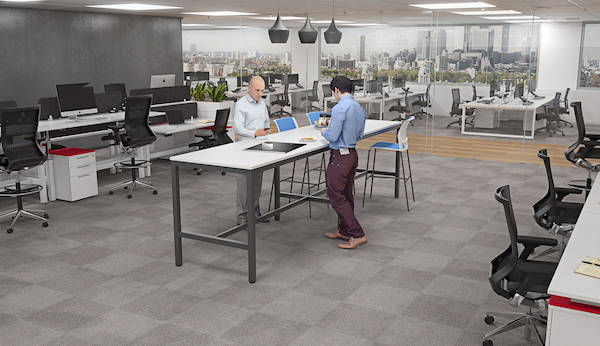Office workstations, by design, should carry the reflection of the type of work your company and employees are engaging in. In our years of experience in helping businesses buy the right office furniture, especially the types of office workstations, we have observed that more often than not, office managers will end up focusing on the wrong variables.
Some piece of furniture may look good on the list of your monthly expenses, or it might even look good in real life – but in the larger scheme of things, if it does not assist your employees in doing their everyday work, it is of no use.
This is the exact reason why we start with a free office design consultation session, where we establish the bare minimum requirements that every piece of furniture should be able to satiate.
Once we know that, we have a clear directive available to see what type of furniture will work for what type of businesses. Thus, after having consulted several businesses over this issue, this is the guide we have developed. Here are a few dimensions on which you should evaluate the furniture that will suit the needs of your business:

Here are the types of Office Workstations
1. Individualistic versus collaborative workplace
One of the most decisive factors that have to be analysed before any office furniture is ordered, is the nature of the workplace. Majority of the workplaces tend to fall either into individualistic work places or collaborative workplaces.
Now, media would say that you should have a more collaborative workplace. That said, this simply does not work for several industries and we understand that. Some businesses are dependent on individual performers, but they don’t want to have the cabin culture. Hence, for such businesses, focusing on providing privacy using back to back office workstations along with office partition screens can do wonders.
At the same time, if you are running a business where everyday collaboration is required, you should be looking at getting a combination of an open office design along with a 2, 3, 4 or 6-person office workstation.
2. Departmentalization
If you have ever visited a law firm or an asset management firm, versus having visited a newly minted startup that has raised funds – you will know the stark difference that arises only because of departmentalization.
More established firms tend to have equally established departments. Typically, there will be an accounts team, a finance team, a human resources team, an IT team and so on. Some firms prefer having a more open ended arrangement where people from all functions can sit across each other and get the work done. Some organizations prefer more structured establishments for each department.
Simply put – more departmentalization would eventually mean increased compartmentalization of furniture. You will need more furniture that helps in highlighting the difference between departments. At the same time, less departmentalization would mean providing a balance between collaboration and yet providing enough privacy for people to finish their work without getting distracted.
3. Daily workload
Finally, one of the key variables that play a decisive role in what type of furniture is appropriate for your employees is the daily workload. You would want your employees to be productive, round the clock, irrespective of what work-hour it is. Ensuring this is extremely difficult. That said, if you have long working hours, you can definitely consider having sit-stand desks in the office. Along with this, a combination of adjustable desks and chairs will be helpful in maintaining productivity and avoiding fatigue.
